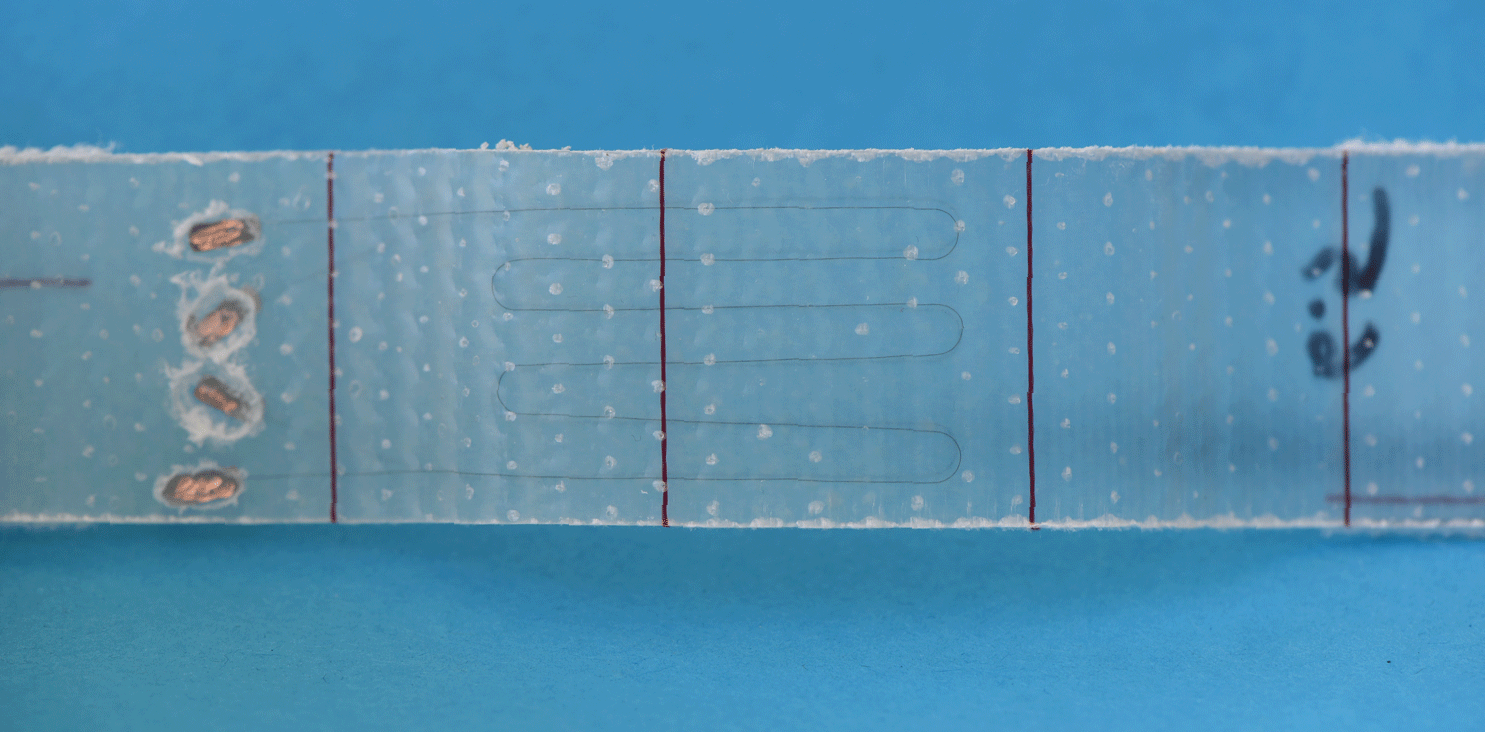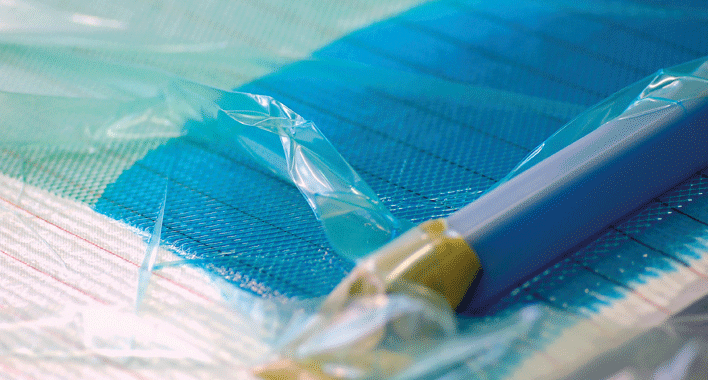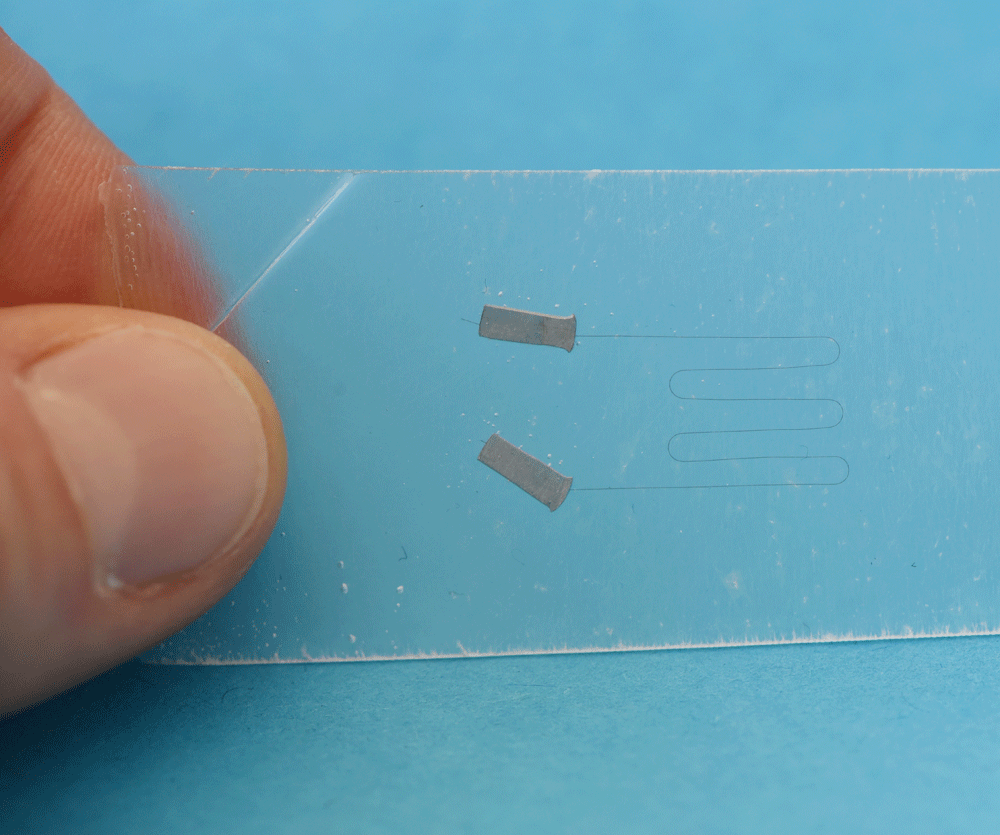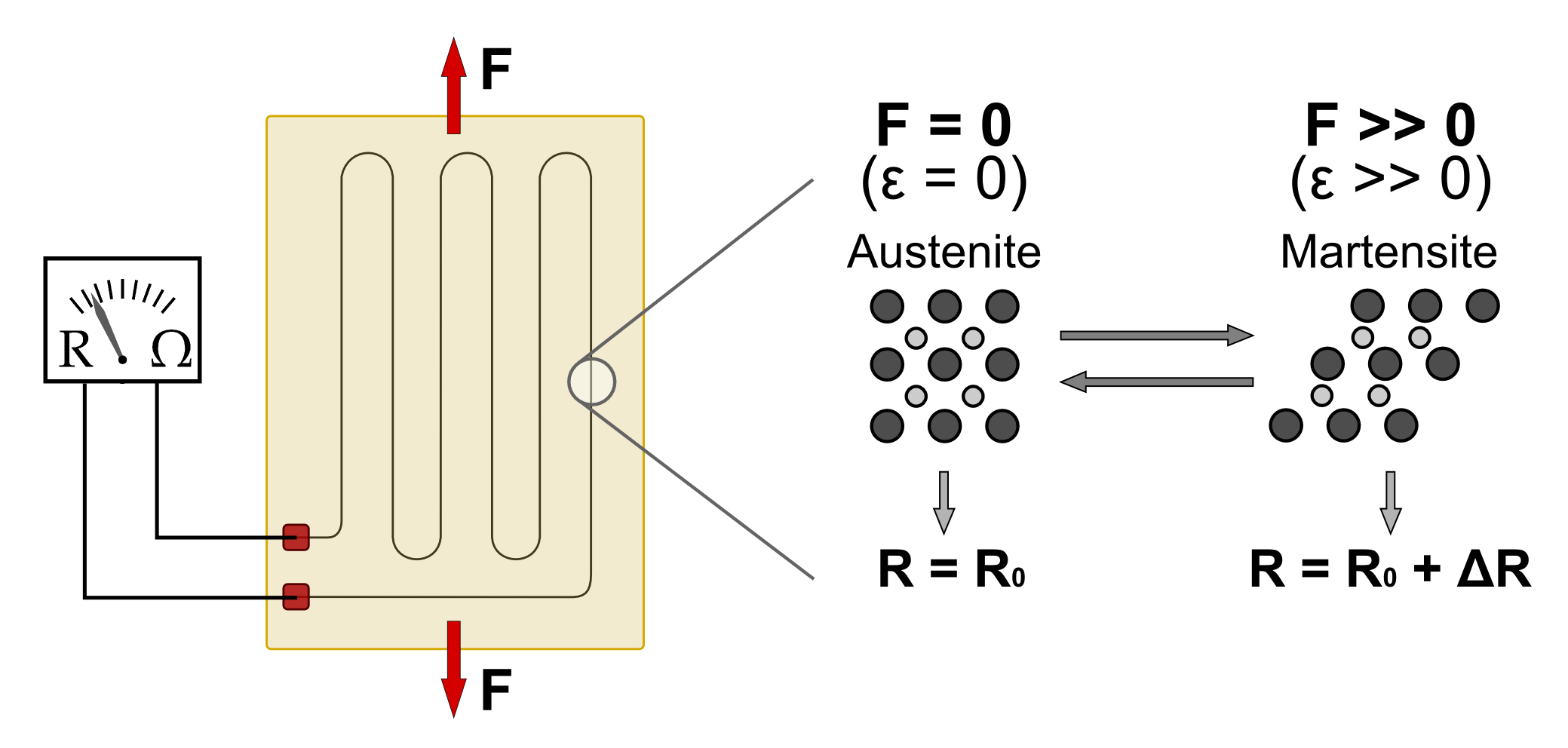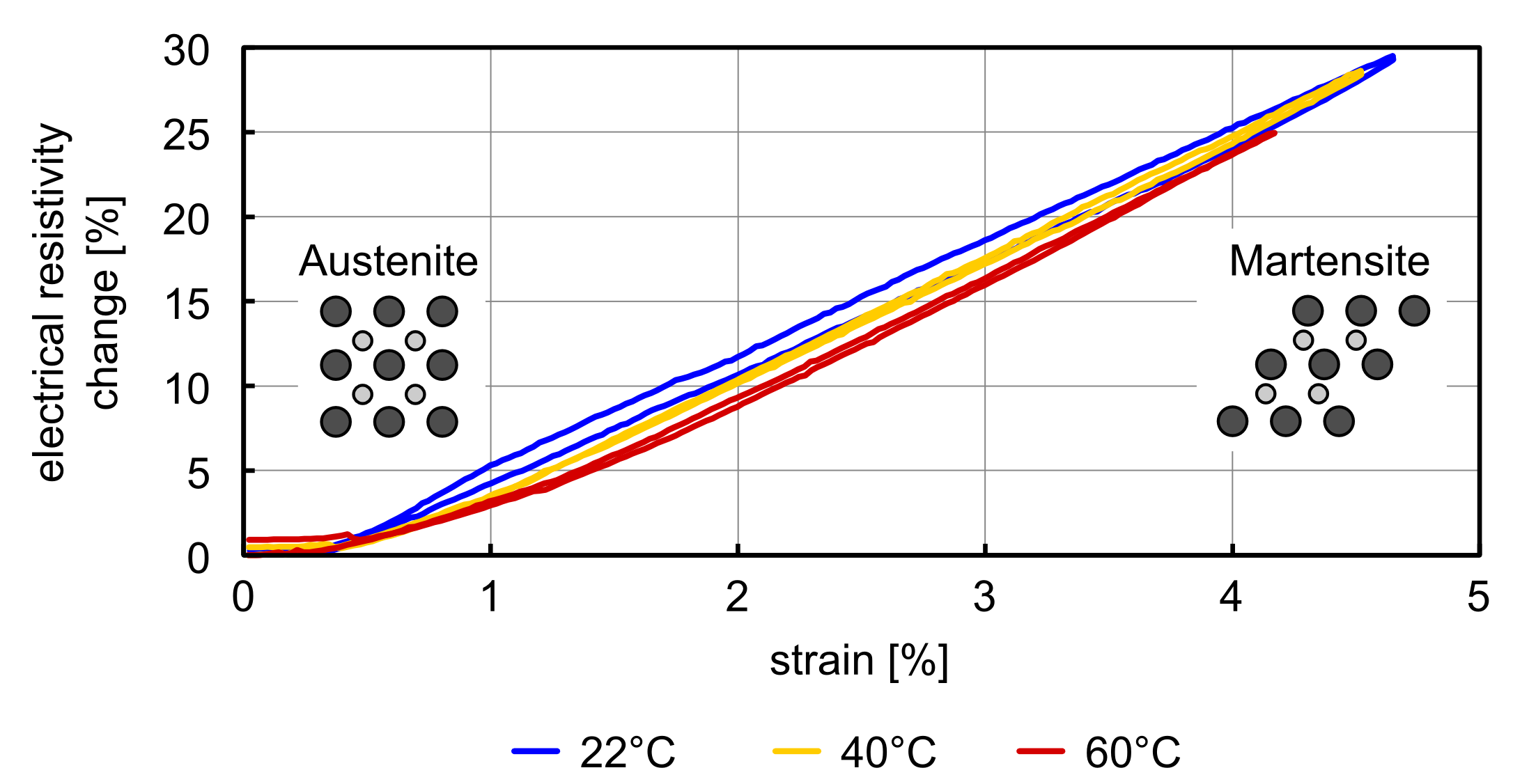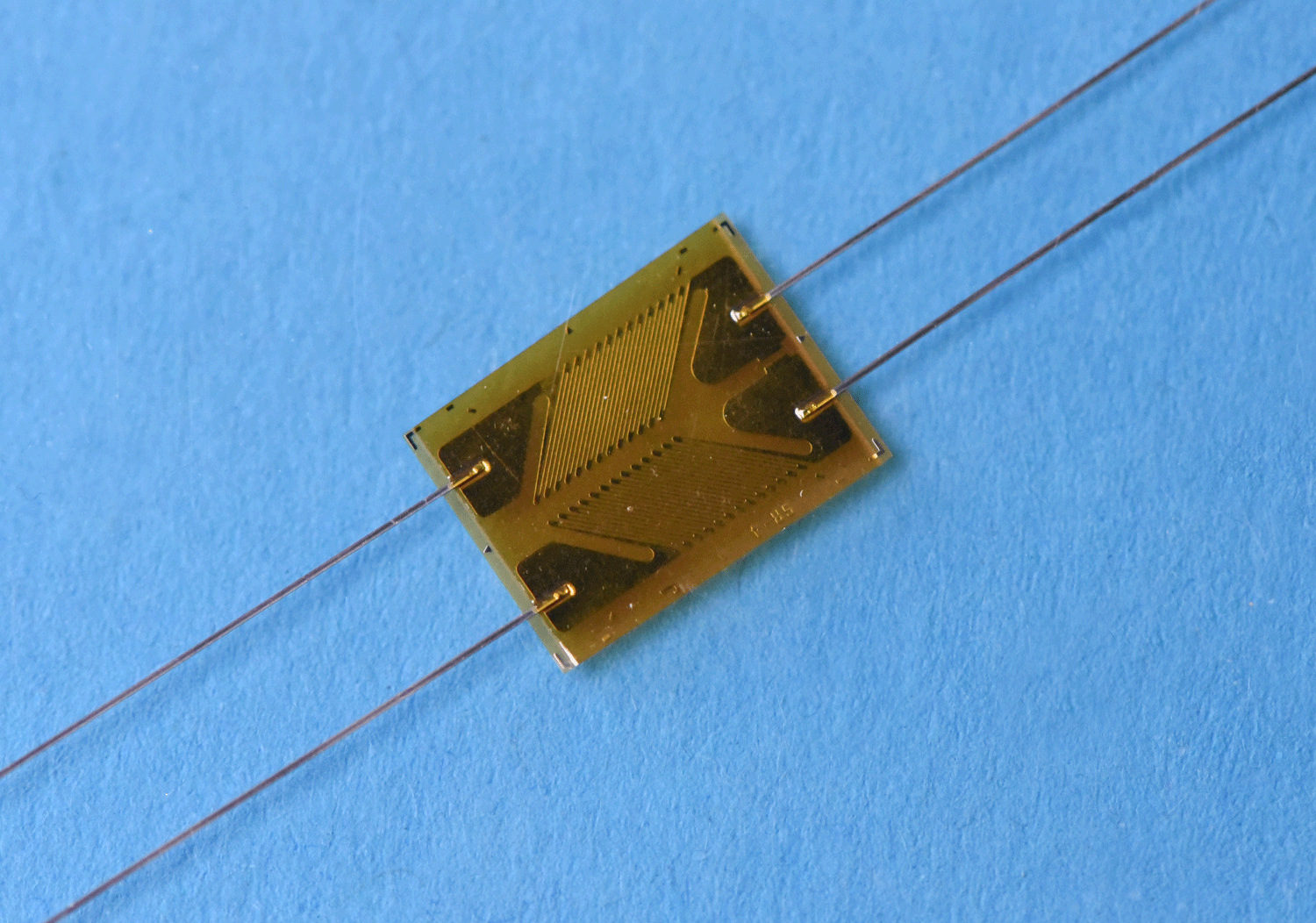Advantages of SMA strain gauges
High elasticity due to strain-induced phase transformation
- max. reversible strain: 8 % (80,000 µm/m)
- proof for 106 cycles at 1 % (10,000 µm/m) strain
- min. gauge factor: 5
- transverse sensitivity (GFRP): -0.09
Simple sensor integration into polymers and composites
- embedment of sensor structures via injection molding, laminating and infiltration
Minimum thermal drift compared to carbon fibre sensors
Simple data acquisition by means of electric resistance changes
Extremely long lifetime
